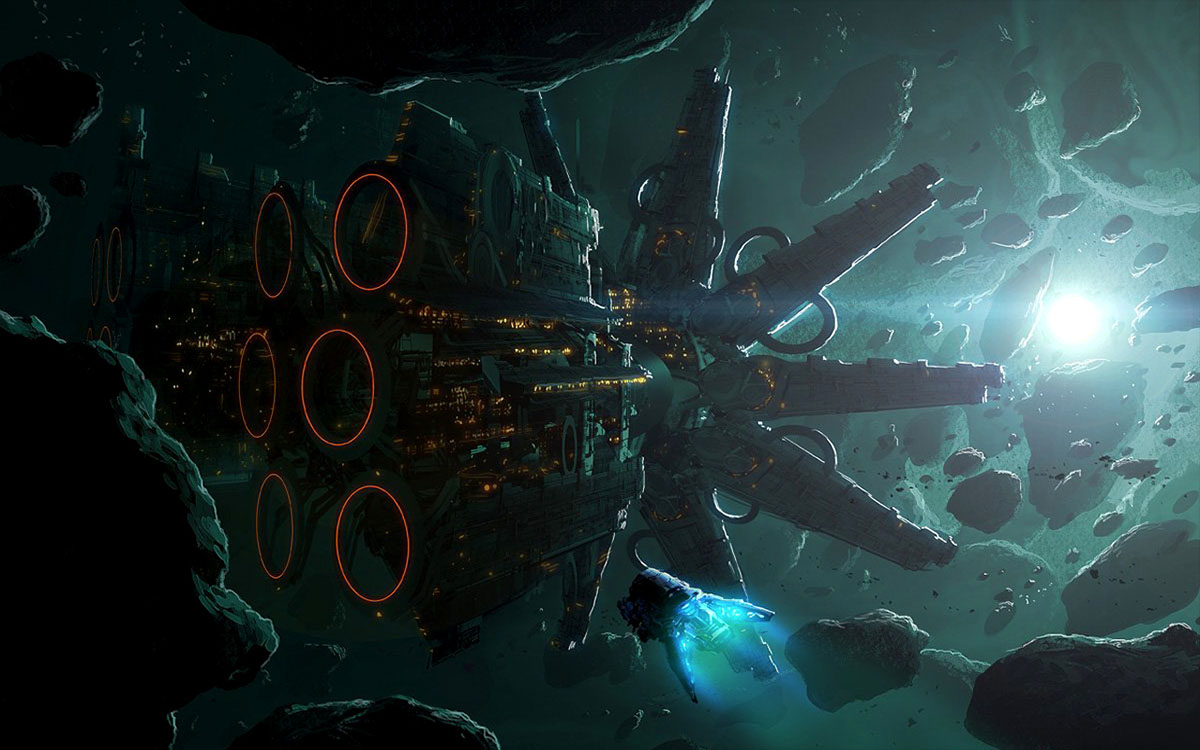could we see how aliens mine asteroids?

Whenever skeptics talk about the probability of an alien invasion, we often like to point out that attacking very distant worlds is totally unnecessary thanks to asteroid belts, which contain countless tons of resources of virtually every sort and won’t require an armada to subdue before extraction can begin. But, wonders a duo of astrophysicists, wouldn’t a civilization so big and technologically advanced that it absolutely needs to mine an entire asteroid belt to fuel its explosive growth on a massive scale also leave astronomically noticeable clues as to what it was doing? In effect, could we point our telescopes to a debris cloud around a star and detecting various anomalies such as an odd lack of certain materials, strange heat signatures, and dust clouds within dust clouds, gather enough evidence of alien asteroid mining in full swing? It’s an interesting idea and it may actually help us find places where to find other intelligent life nearby, however, it does come with a catch, one which the authors readily acknowledge. Our hypothetical aliens would have to consume resources on cosmic scales, devouring asteroid after asteroid at a dizzying rate, no easy task for anything that may be out there.
Tracking down an alien species by watching it mine its home asteroid belt carries a lot of advantages over an occasional peek at their home planet intended to figure out whether it may have oxygen in its atmosphere or a trace of liquid water on its surface. We’ll already know three very important things about them. We’ll know that they exist. We’ll know that they’re intelligent and have the technology required to leave their planet. And finally, we’ll know that they’ve built a vast civilization which requires a lot of resources to keep going. Just one simple set of observations could yield answers to many questions we’d otherwise have about them, and raise many, many others which we’re forced to relegate to the realm of highly speculative philosophical ruminations today. However, we can only really detect the debris clouds they would be mining with instruments just not sensitive enough to pick up a small scale operation. Any conclusive evidence would have to come from anomalies that cover a significant percentage of the debris cloud, pointing to an incredibly vast and advanced society which is likely to be quite old when compared to us, and in need of more resources than it would take to supply all our energy and material needs for millions of years. Such a civilization would be very rare and very hard to track down unless we get lucky and just manage to stumble across one in our backyard.
Should we find such a species though, we would very likely see significant reductions in heavy metals we expect could be used for superconductors, high-end electronics, and in smelting sophisticated alloys while a debris cloud of far more common materials would be ejected and discarded. Though this would only happen if the species in question decided to employ massive mining machinery on asteroids instead of finding other solutions to extraction or refinement, such as nanoparticles which sink into the innards of asteroids and bring back large clumps of iridium, gold, platinum, palladium, iron, nickel, and copper. Such mining from the inside out would be completely undetectable to astronomers because it would leave the surfaces of asteroids pretty much the same until they’re completely tapped out and abandoned. Only very old mining missions would ever show up, and even then, they would be rather inconclusive until we start seeing patterns in mineral depletion which are very difficult to explain by any other means than targeted extraction. Considering that there are likely to be thousands upon thousands of asteroids in your typical debris belt, the species in question has to keep on mining for many millennia to make a dent significant for us to notice from Earth, which means that again, a species like that would be very rare, an exception rather than the norm, and very difficult to find.
See: Forgan, D., et al. (2011). Extrasolar Asteroid Mining as Forensic Evidence for ETI arXiv: 1103.5369v1
[ story tip by Dr. Ian O’Neill ]





